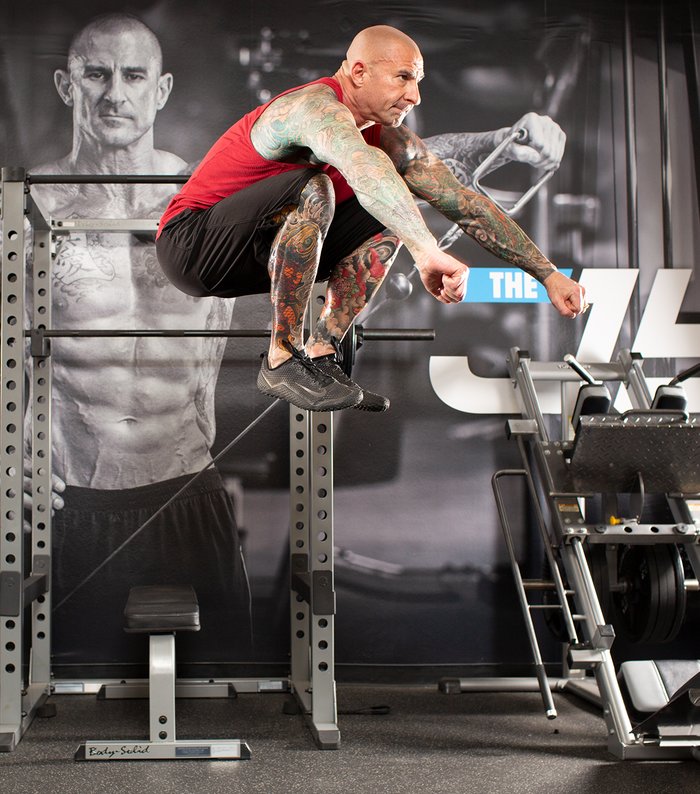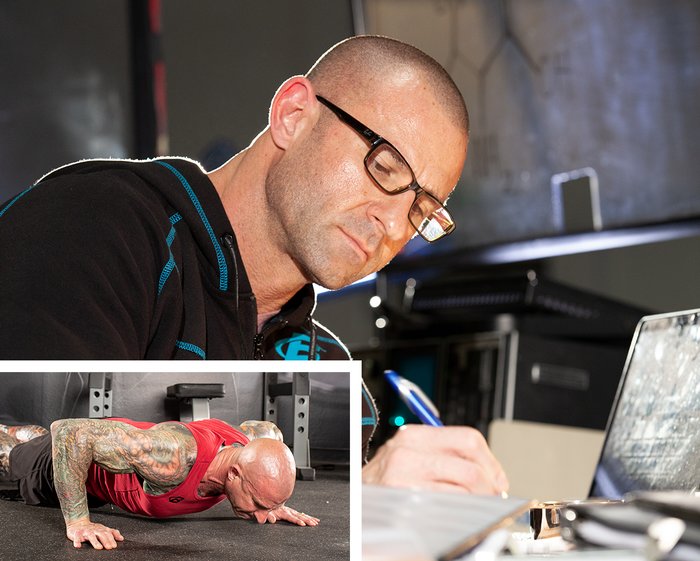There's a huge problem in the world today, and I'm not talking about climate change. I'm talking about the obesity epidemic. Why, despite ever-increasing knowledge about the working of the human body, are we becoming unhealthier than ever?
Poor nutrition—and lots of high-fructose corn syrup—isn't the main cause. Too little exercise—and too many unused gym memberships—isn't behind it either. Sure, both play a role, but the real reason the world is so fat and unhealthy is that people just sit on their butts too much. And no, an hour workout doesn't get you all the daily exercise you need.
Sit Still, Go Backward
When the human body sits for 30 consecutive minutes or longer, it turns off the genes that regulate metabolism, fat burning, and blood glucose. At the same time, it down-regulates the activity of lipoprotein lipase (LPL), a key enzyme in fat burning, and reduces the amount of blood glucose it metabolizes.[1]

This little Trifecta of Lethargy means you start burning less fat—and storing more fat. It can also lead to numerous metabolic disorders and diseases such as type 2 diabetes, heart disease, and even certain cancers. It's hard to understand how something as benign as sitting could trigger so many unhealthy processes, but it's true.
Training is Not Enough
Working out is not a substitute for being active throughout the day. You can train hard in the gym and still ruin your health if, once you leave the gym, you do nothing but sit around. On the other hand, you can be the healthiest person on the planet without ever stepping foot in a gym—without ever "working out."
Consider what a workout is supposed to be, and what it's become. It's supposed to be a way to make your body stronger, faster, more flexible, leaner, more muscular, and endure more, so that you can look better and perform better on the field, court, or street. But for many people, workouts have become a substitute for the activities they're meant to train us to do better.
The human body is designed to wake up with daylight, hunt or farm for food, and hide from predators all day long. Then darkness comes, bringing rest and rejuvenation, then it begins all over again.
Obviously, in today's world, survival is much easier. You don't have to hunt, farm, prep, or even cook your own food anymore. Most of us wake up, down a cup of coffee, jump in our car (or the bus or the train), maybe grab a premade breakfast from a fast-food joint, and then sit still for the ride to work.
Once at work, we sit for the majority of the day, walk however many steps it takes to get back in our mode of transportation, then sit still for the commute home. Once we get home, we sit down to dinner, sit watching television, they lay down and go to sleep. What a workout!
Even if you're a highly motivated person and get your daily, one-hour, high-energy workout in, that's still only 60 minutes of activity, surrounded by 23 hours of inactivity. It doesn't take a doctorate in exercise science to understand that one brief burst of energy could never make up for all the physical exertion our bodies are designed to engage in throughout the day.

Over/Under: 40 Minutes
A 2008 Australian study reviewed data previously collected from more than 4,000 people who had performed at least 2.5 hours of moderate to intense activity each week for one year. The researchers divided the group into those who watched more than 40 minutes a day of television and those who watched less than 40 minutes. They found that those who watched more than 40 minutes of television per day had, on average, larger waist circumferences (more body fat), higher blood pressure (unhealthy cardiovascular system), and higher blood glucose levels (a harbinger of type 2 diabetes) than those who watched less than 40 minutes, even though both groups had similar workout habits.[2]
If you're busy patting yourself on the back because you do your daily workouts and skip the TV, don't pat too hard. The amount of time spent watching television is just an indicator of the amount of time someone is apt to spend sitting, whether in a car, in front of a TV or computer, or just reading. It all counts as inactivity and it all wreaks havoc on your health.
The 30/60 Rule
Based on research into the effects of sitting for 30 minutes or more, my 30/60 rule is designed to combat the problem of too much sitting.[1] Here's how it works: Every time you sit for 30 minutes or more, perform 60 seconds of any activity. Stretch, run in place, do jumping jacks or push-ups, do a quick walking loop around the office, or jog up and down a flight of stairs.

I created the 30/60 rule to help people become more aware of how much time we can spend being inactive at work, at home, at school, during a commute, on business trips—even on vacation. In addition to employing my 30/60 rule, look for creative ways to keep active throughout your day.
Park as far away from the grocery store as possible so that you get a longer walk. Don't use escalators or elevators unless necessary. Walk or bike whenever possible. And don't tell yourself you're too busy to do any of these things. A brief exercise break can make you more alert and more productive.
Visit JimStoppani.com for more great fitness content, workouts, training tips, and articles on nutrition and supplementation.
References
- Hamilton, M. T., Hamilton, D. G., & Zderic, T. W. (2007). Role of low energy expenditure and sitting in obesity, metabolic syndrome, type 2 diabetes, and cardiovascular disease. Diabetes, 56(11), 2655-2667.
- Healy, G. N., Dunstan, D. W., Salmon, J. O., Shaw, J. E., Zimmet, P. Z., & Owen, N. (2008). Television time and continuous metabolic risk in physically active adults. Medicine and Science in Sports and Exercise, 40(4), 639-645.

